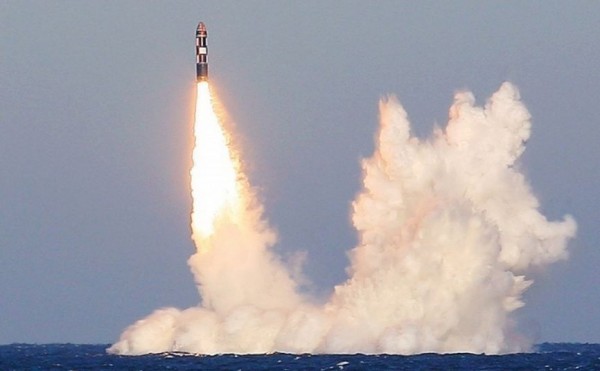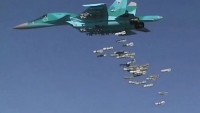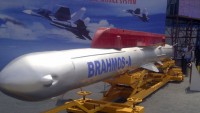Russia’s Jinxed Bulava Missile Crippled by High Failure Rate
| Arthur Dominic Villasanta | | Oct 05, 2016 02:56 AM EDT |
(Photo : Russian Navy) Jinxed: Russia's Bulava SLBM.
The Russian Navy's new "Bulava" RSM-56 (NATO reporting name SS-NX-30) submarine launched ballistic missile (SLBM) -- the most expensive weapons system in Russian history -- continues to be plagued by a high rate of failure three years after its deployment.
This disaster ridden SLBM was developed for the Russian Navy and deployed in 2013 on the new Borei class nuclear ballistic missile submarines. It's the new naval cornerstone of Russia's nuclear triad and is the most expensive weapons program in Russia.
Like Us on Facebook
Nine of the 27 test launches of the missile were failures, an unacceptably high failure rate of 24 percent. That means there's a one in four chance a Bulava will either blow-up after launch or miss its target.
The latest fiasco occurred last Sept. 28 when one of two Bulavas launched from the Borei-class submarine, Yury Dolgoruky, navigating the White Sea self-destructed after the first stage burnout and fell into the sea.
The target of both Bulavas was the Kura firing range on the Kamchatka Peninsula in the Russian Far East. The White Sea is a southern inlet of the Barents Sea located on the northwest coast of Russia.
Military sources believe the failed missile was slightly damaged on launch, making it impossible for it to reach its destination. The Ministry of Defense of the Russian Federation declined to comment.
The Bulavas past failures were mostly traced to shoddy workmanship and substandard materials, and this might still be the case today.
One Russian analyst claims a series of mistakes was made during the Bulava's construction.
"Firstly, the developers, who had never worked with ICBMs for nuclear submarines, in certain stages limited themselves to computer models rather than testing at sea. Secondly, the government should not have been trying to optimize costs and deadlines by unifying 'ground' missiles with 'sea' missiles."
Western analysts, on the other hand, noted the Bulava's flight test program was problematic. Until 2009, there were 6 failures in 13 flight tests and one failure during a ground test, mostly blamed on substandard components.
The missile was officially approved for service in December 2011 and was commissioned aboard the Yuri Dolgorukiy on in January 2013.
The missile, however, continued to fail in the summer of 2013 and wasn't operational as of November 2013. It failed again in 2015.
In November, the Vladimir Monomakh, another Borei-class submarine, fired two missiles while submerged. One of the missiles self-destructed during the boost phase and the other failed to deliver its warheads to the specified target. It was determined the missiles failed due to manufacturing defects.
TagsBulava, Borei-class, submarine launched ballistic missile, Russian Navy, Yury Dolgoruky
©2015 Chinatopix All rights reserved. Do not reproduce without permission
EDITOR'S PICKS
-

Did the Trump administration just announce plans for a trade war with ‘hostile’ China and Russia?
-

US Senate passes Taiwan travel bill slammed by China
-

As Yan Sihong’s family grieves, here are other Chinese students who went missing abroad. Some have never been found
-

Beijing blasts Western critics who ‘smear China’ with the term sharp power
-

China Envoy Seeks to Defuse Tensions With U.S. as a Trade War Brews
-

Singapore's Deputy PM Provides Bitcoin Vote of Confidence Amid China's Blanket Bans
-

China warns investors over risks in overseas virtual currency trading
-

Chinese government most trustworthy: survey
-

Kashima Antlers On Course For Back-To-Back Titles
MOST POPULAR
LATEST NEWS
Zhou Yongkang: China's Former Security Chief Sentenced to Life in Prison

China's former Chief of the Ministry of Public Security, Zhou Yongkang, has been given a life sentence after he was found guilty of abusing his office, bribery and deliberately ... Full Article
TRENDING STORY

China Pork Prices Expected to Stabilize As The Supplies Recover

Elephone P9000 Smartphone is now on Sale on Amazon India

There's a Big Chance Cliffhangers Won't Still Be Resolved When Grey's Anatomy Season 13 Returns

Supreme Court Ruled on Samsung vs Apple Dispute for Patent Infringement

Microsoft Surface Pro 5 Rumors and Release Date: What is the Latest?














